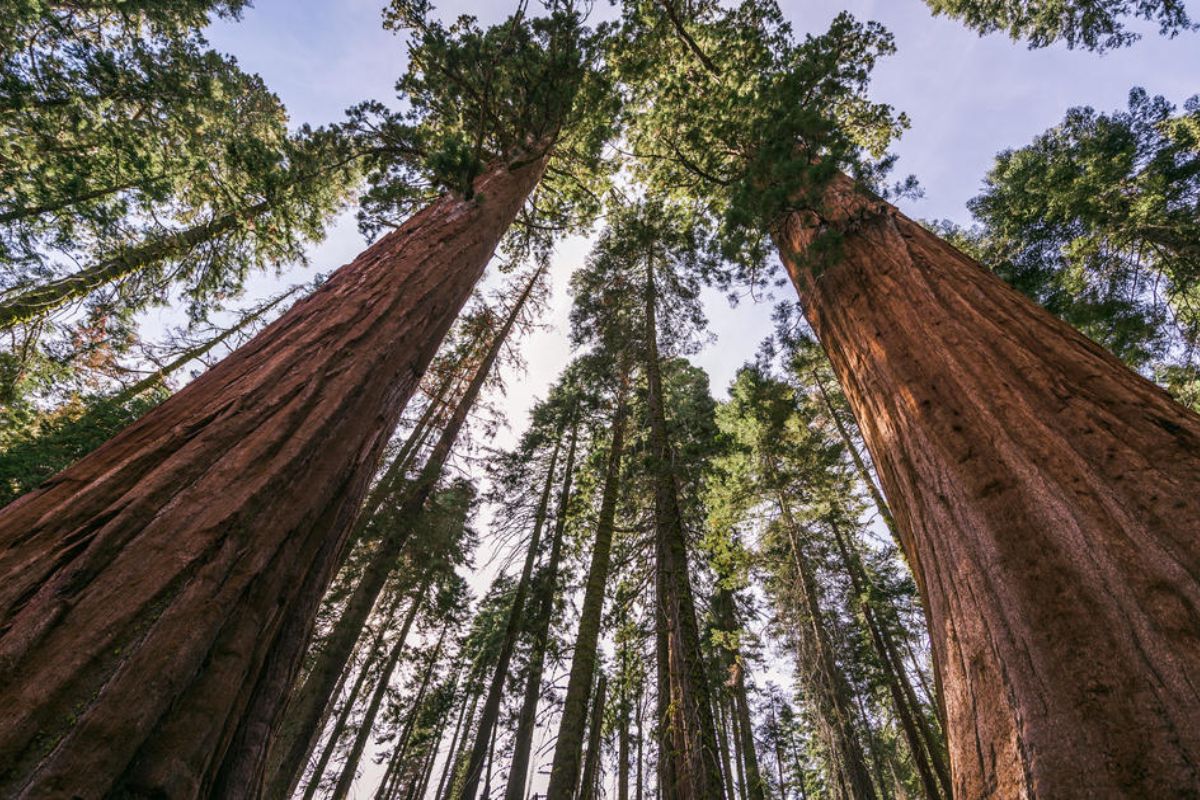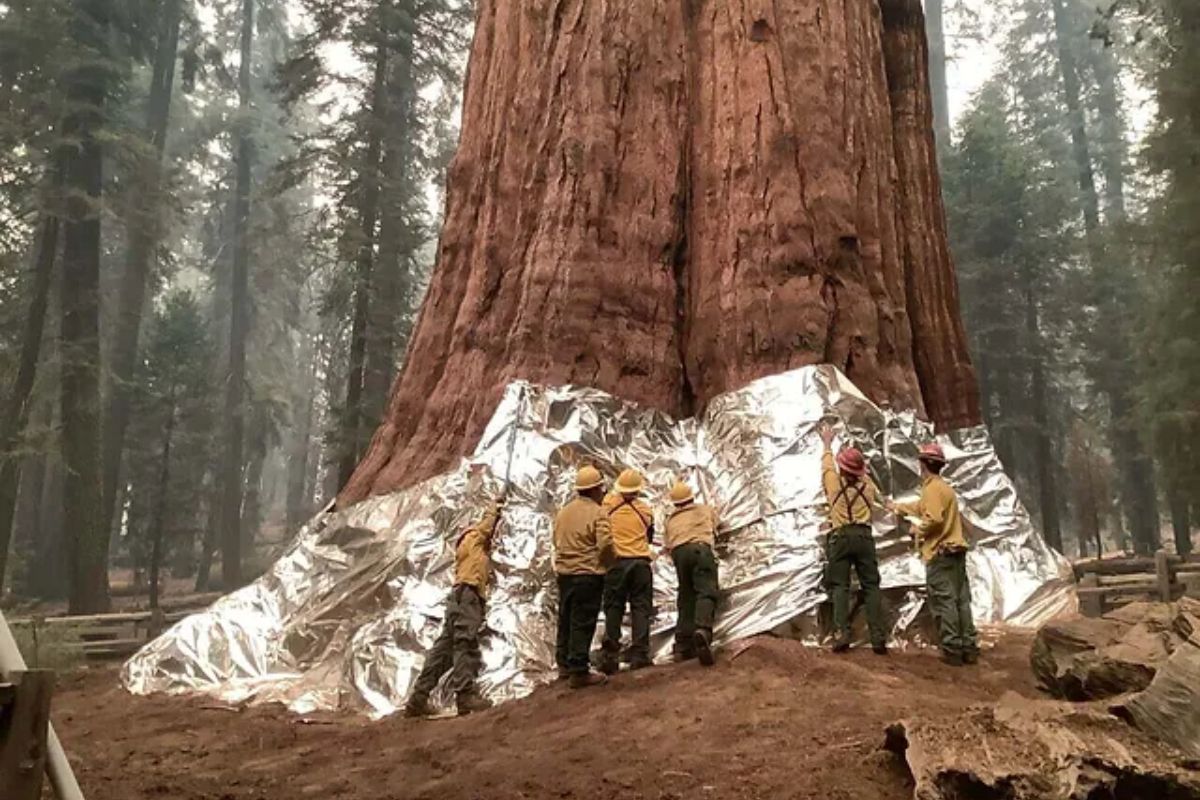Research Reveals Wildfire: In the serene realm of towering giant sequoias, a revelation has emerged that challenges conventional wisdom wildfires, once seen as harbingers of destruction, are now being hailed as essential protagonists in the life cycle of these ancient behemoths.
The intricate dance between flames and sequoias has unraveled a narrative that is as surprising as it is crucial for the survival of these arboreal giants.
As the scientific community peels back the layers of this symbiotic relationship, a deeper understanding of the role of wildfires in nurturing and sustaining these majestic beings beckons us to reconsider our perceptions of nature’s intricate design.
Giant Sequoias Unexpected Savior: Wildfires
Wildfires emerge as an unexpected ally in the preservation of California’s magnificent giant sequoia trees, as revealed by researchers from the John Muir Project. Dr. Chad Hanson and his team have uncovered a surprising truth: wildfires play a crucial role in the life cycle of these iconic trees. Rather than being destructive forces, wildfires are essential for the health and vitality of giant sequoia ecosystems.
Contrary to common misconceptions, wildfires act as a catalyst for giant sequoia reproduction, particularly in areas where the fires burn intensely. The heat generated by these fires causes the cones of the giant sequoias to open and release their seeds, creating a fertile environment for the next generation of trees to take root. Additionally, the clearing of underbrush and competing vegetation by wildfires allows young sequoias to access essential nutrients and sunlight, promoting their growth and ensuring the long-term sustainability of the forest.
Through their research, the John Muir Project has highlighted the intricate relationship between wildfires and giant sequoias, challenging previous beliefs about the impact of fires on these ancient trees. By recognizing the positive effects of wildfires on sequoia ecosystems, we can better understand the natural processes that have shaped these forests for thousands of years, paving the way for more informed conservation efforts in the future.
Renewed Hope: Regeneration in Fire-Affected Groves
In the aftermath of the 2021 KNP Complex fire in the Redwood Mountain Grove, researchers have witnessed a remarkable resurgence of life in areas heavily impacted by the intense burns. The devastated landscape, once a scene of charred remains, now shows signs of vibrant regeneration. This resurgence is particularly evident in areas where the fire’s intensity was most severe.
Giant sequoias, the majestic guardians of these forests, have displayed a remarkable adaptation to the destructive force of wildfires. These ancient trees have evolved a unique strategy for survival whereby they release seeds in response to high-intensity fires. The intense heat from such fires melts the trees’ resin and opens their cones, triggering the germination process. It is this very cycle of destruction and rebirth that has allowed giant sequoias to thrive for centuries in these fire-prone landscapes.
The accelerated regeneration witnessed in the wake of the KNP Complex fire challenges previous misconceptions regarding the impact of wildfires on these iconic trees. Instead of being viewed solely as agents of destruction, wildfires are now recognized as vital components of the giant sequoias’ life cycle, essential for their continued existence and regeneration. This newfound understanding offers renewed hope for the preservation and sustainability of these ancient groves in the face of future fire events.
Revisiting Fire Management Strategies
Amidst the resurgence of life and renewed understanding of the vital role wildfires play in the regeneration of giant sequoias, the discourse on revisiting fire management strategies emerges as a pressing consideration in preserving these ancient forests.
The following four crucial aspects need consideration in developing effective fire management strategies for the giant sequoia ecosystems:
- Balancing Preservation with Regeneration: Finding a balance between preserving the ancient giants and allowing wildfires to naturally regenerate the forests is crucial. Understanding how to intervene without disrupting the natural cycle is key to the long-term health of these ecosystems.
- Implementing Controlled Burns: Controlled burns can mimic the effects of natural wildfires, promoting sequoia regeneration while reducing the risk of catastrophic uncontrolled fires. Developing a controlled burning strategy that aligns with the sequoias’ regeneration needs is essential.
- Incorporating Indigenous Knowledge: Indigenous communities have a long history of living in harmony with the land, including managing wildfires. Incorporating indigenous knowledge and practices into fire management strategies can provide valuable insights into sustainable approaches.
- Monitoring and Adaptation: Continuous monitoring of the forests, the impact of fires, and the response of sequoias is essential. Developing adaptive strategies based on real-time data and research findings will help ensure the resilience of these iconic ecosystems.
Dispelling Misconceptions: Sequoias’ Adaptation to Fire
Dispelling misconceptions surrounding the adaptation of giant sequoias to fire requires a nuanced understanding of the crucial role wildfires play in the reproduction and survival of these iconic trees. Dr. Hanson’s insights challenge the notion of thriving sequoias in regions like the UK, emphasizing that while these trees may survive outside their natural habitat, successful reproduction hinges on fire-induced conditions. The absence of wildfires in regions like the UK creates a barrier to the sequoias’ natural lifecycle, hindering their ability to propagate effectively.
To truly grasp the relationship between wildfires and sequoia evolution, one must acknowledge the intricate dance between these majestic trees and the flames that shape their existence. Rather than fearing fire as a destructive force, it is essential to recognize its role as a catalyst for renewal in sequoia forests. By dispelling myths and misinformation, Dr. Hanson advocates for a more informed approach to conservation that embraces the essential role of wildfires in maintaining the health and vitality of sequoia ecosystems.
In essence, the adaptation of giant sequoias to fire is not just a matter of survival but of thriving. These trees have evolved over millennia to depend on wildfires for their continued existence, highlighting the resilience and adaptability of nature’s most magnificent creations.
ALSO READ: Family Survives Small Plane Crash with Parachute Deployment
A groundbreaking study by the John Muir Project challenges traditional views on wildfires, revealing them as essential for the survival of California’s giant sequoia trees. Dr. Chad Hanson and his team highlight wildfires’ role in sequoia reproduction, emphasizing how intense burns trigger seed release and promote regeneration. The research offers hope amidst recent fires, showcasing the sequoias’ resilience. It calls for reevaluating fire management, advocating for controlled burns and indigenous knowledge incorporation. Dispelling myths, the study underscores the symbiotic relationship between wildfires and sequoias, vital for their thriving existence.



